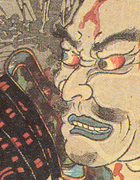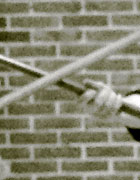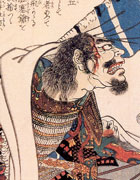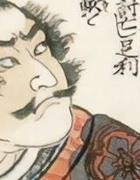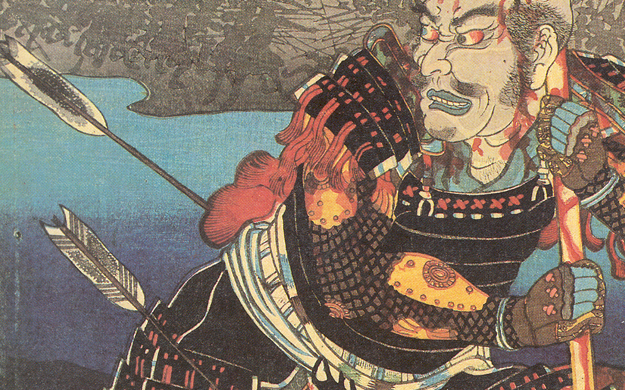
The Shinto ryu knows three formal grades: the menkyo, the mokuroku and the
kirigami.
In an early stage of his study the student can receive a kirigami
(abbreviation of kirigami no menkyo). Kirigami literally means “paper
clipping”. It is the “vow” with which the student is allowed instruction of
the school.
Moruroku is granted to a more advanced student and literally means “list” or
“catalogue”.
Menkyo means “license” or “authorisation” and originally granted the right to
use the name of the school when dealing with third parties, like in duels, and
to give out graduations.
Within these three main categories further distinctions can be made:
- shoden (first step in the tradition)
- chuden (second step in the tradition)
- okuden (the heart of the tradition, the deeply initiated)
- kaiden (the concluded step, the completely initiated)
Menkyo kaiden, then, is the highest possible degree.
Hatakeyama Goro sensei uses the following system:
- menkyo kaiden (8th dan and higher)
- menkyo okuden (7th dan)
- menkyo chuden (6th dan)
- menkyo mokuroku (5th dan)
- mokuroku chuden (4th dan)
- mokuroku shoden (3th dan)
- kirikami chuden (2th dan)
- kirikami shoden (1st dan)
Historical background
The original kobudo styles of before the 1868 Meiji-restoration did not have
the belt system with dan and kyu grades as it exists in modern martial arts.
Seen from a historical point of view it is not even sure if and how medieval
ryu like the Katori Shinto and the Kashima Shinto ryu were institutionalised.
It was probably not before the Edo period, so after 1600, that the martial
arts were professionalised to a degree that instilled the need for a
formalisation that could show students their progress. The system of dan and
kyu grades with coloured belts was created only at the end of the 19th century
by Jigoro Kano, the founder of the modern judo. Before this every ryu had its
own system.
In the main line of the Katori Shinto ryu (the Otake line) only the
traditional system is used. The Sugino Yoshio line is a ryuha, a branch of the
school – a river branch so to speak, as ryu literally also means “stream”.
Sugino himself received his teaching authorisation from the soke and head of
the Katori shrine. In the eighties he joined the Kokusai Budo Renmei, a
federation of martial arts in Japan that started to give dan grades to its
members. Sugino went on to do the same for his own students. The renmei is
internationally known as the International Martial Arts Federation (IMAF),
though it has now apparently split into different groups.
Sugino gave Hatakeyama sensei a menkyo kaiden and a 9th dan. When Sugino
sensei passed away Hatakeyama split off from the Sugino Yukihiro line. He
reverted to the traditional grading system, in which the old grade expressions
are coupled with an equivalent dan grade to make comparison possible.
Stephen Snelders
